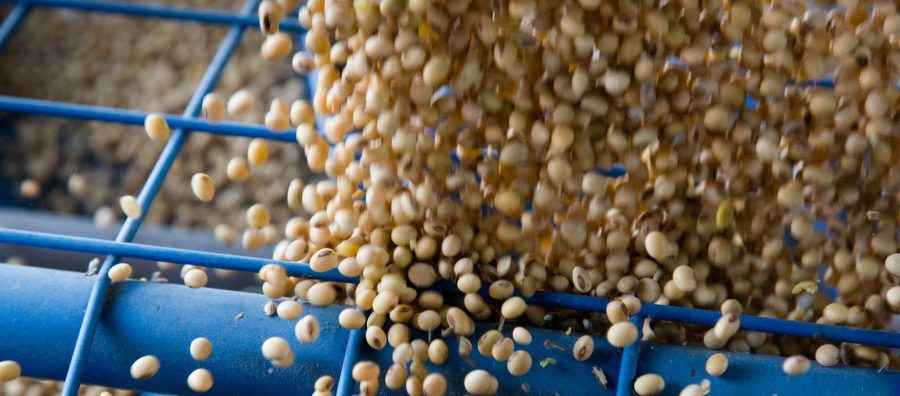Uncover the potential of milk in reducing blood pressure and boosting cardiovascular health. Could this common drink be essential in combating hypertension? Delve into the evidence here.

Recent research underscores the potential of milk in significantly reducing blood pressure and preventing cardiovascular disease, potentially revolutionizing heart health treatment. Extensive studies on the link between milk consumption and cardiovascular health have consistently shown that milk can lower blood pressure, a key factor in preventing heart disease. Given the critical role of blood pressure in conditions like strokes and heart attacks, it’s vital to highlight this knowledge to keep medical professionals and consumers informed about its implications for heart health. Join us as we delve into the data and explore how milk could be a boon for heart health.
The robust scientific evidence firmly supports milk’s role in mitigating hypertension.
Scientific data strongly supports the claim that milk and milk products may dramatically decrease blood pressure and reduce the risk of hypertension. A thorough meta-analysis published in the Journal of Human Hypertension found that regular dairy intake, particularly milk, is associated with a 13% decrease in hypertension risk. This compelling information emphasizes milk’s cardiovascular advantages and potential involvement in hypertension prevention and health promotion, allowing people to make educated dietary choices for cardiovascular well-being.
The findings from the CARDIA Study (Coronary Artery Risk Development in Young Adults) provide solid data on the relationship between dairy intake and blood pressure. The results reveal a significant inverse association, with higher dairy consumption linked to lower blood pressure readings. Specifically, those who consumed more dairy products had a 15% lower risk of developing hypertension, with an average decrease of 3.0 mmHg in systolic blood pressure and 2.5 mmHg in diastolic blood pressure.
Milk’s Mineral Richness: A Pillar for Cardiovascular Health
A critical feature of milk’s positive benefits is its high mineral content. Calcium in milk helps to regulate blood pressure by keeping blood vessels flexible and responsive. Potassium, another vital mineral, counteracts the effects of sodium, so improving cardiovascular health by facilitating salt excretion via urine. Magnesium boosts these advantages by relaxing blood vessels, lowering vascular resistance, and easing hypertension. The nutritional composition of milk, taken as a whole, contributes to cardiovascular health and wellness.
A standard 8-ounce (240 ml) serving of milk typically contains:
- Calcium: Approximately 300 milligrams, about 30% of the daily recommended intake for adults.
- Potassium: Around 370 milligrams, accounting for about 11% of the daily recommended intake.
- Magnesium: About 24 milligrams, close to 6% of the daily recommended intake.
These vital nutrients play significant roles in maintaining optimal blood pressure and cardiovascular health.
Milk’s Fatty Acid Spectrum: A Multifaceted Shield for Cardiovascular Wellness
Milk’s fatty acids contribute to cardiovascular health, providing benefits beyond needed nourishment. Oleic acid, present in olive oil, is essential in reducing the development of fatty plaques inside arteries, lowering the risk of atherosclerosis. The percentage of oleic acid in milk varies depending on the cow’s diet and the kind of milk. Whole milk contains around 1.0-1.5 grams of oleic acid per 100 grams. Conjugated linoleic acid (CLA) helps decrease cholesterol and improve endothelial function, promoting improved blood vessel health and optimum blood flow. These fatty acids emphasize milk’s nutritional importance and support dietary recommendations for heart health. Individuals may strategically protect themselves against hypertension and cardiovascular disease by adding milk to a healthy diet.
Challenges and Opportunities Arising from Recent Findings
The most current results highlight problems and possibilities for numerous parties.
These findings require the medical community to reevaluate dietary recommendations, particularly those based on out-of-date assumptions. Emerging research supports including milk in cardiovascular health guidelines.
Recent research encourages consumers, especially those treating hypertension, to choose low-fat, no-added-sugar alternatives to maximize health advantages.
The dairy sector may capitalize on these discoveries by developing products supplemented with beneficial minerals and fatty acids. Milk’s heart health advantages may be marketed to reposition it as an essential component of a well-balanced diet, benefiting public health.
The Converging Evidence: Meta-Analyses, Longitudinal Studies, and Comparative Research
A meta-analysis of 29 randomized clinical studies published in the American Journal of Clinical Nutrition found that dairy intake substantially influences blood pressure. The study found that eating dairy products daily reduced systolic and diastolic blood pressure by an average of 2.4 mm Hg and 1.3 mm Hg, respectively. The positive benefits were more evident in those with hypertension, highlighting dairy’s potential therapeutic utility in controlling this illness.
The EPIC-Norfolk research broadened the investigation’s scope and presented convincing longitudinal data. This cohort research methodically followed over 25,000 individuals for an average of 12 years. The results were surprising: those who consumed dairy products regularly had a 16% reduced chance of getting hypertension than those who drank little dairy. This inverse correlation suggests a strong connection between frequent dairy intake and lower hypertension risk.
Research published in the Journal of Dairy Science investigated the subtle advantages of dairy type. It focused on hypertensive people and compared the effects of skim vs. whole milk intake. The study revealed that skimmed milk significantly decreased blood pressure by an average of 4.9 mm Hg without negatively impacting cholesterol levels, indicating that milk’s antihypertensive advantages are inherent rather than primarily based on its fat content.
Skimmed Milk vs. Whole Milk: Evaluating the Hypertensive Benefits and Cholesterol Neutrality
Research on the effects of skimmed milk vs. whole milk in hypertensive people has shown persuasive data favoring the former. Research published in the Journal of Dairy Science looked into this comparison and found surprising findings. Individuals who had skimmed milk had a considerable decrease in blood pressure, with systolic pressure dropping by around 5 mm Hg and diastolic pressure falling by about 3 mm Hg. This decrease in blood pressure occurred without a rise in cholesterol levels, highlighting skimmed milk’s distinct benefit.
These results are significant for those with hypertension, as they demonstrate that skimmed milk can be a strategic tool in their dietary arsenal to lower blood pressure. The absence of high cholesterol alleviates common concerns about dairy intake, making skimmed milk a practical and healthy choice for cardiovascular health. This knowledge empowers individuals to take control of their health and make informed dietary decisions.
The Bottom Line
Reaffirming critical findings, milk is a caring factor and a powerful ally in the fight against hypertension and cardiovascular disease. Comprehensive research and meta-analyses have repeatedly shown that milk intake is associated with lower blood pressure and a decreased risk of hypertension. This emphasizes milk’s critical function in promoting heart health due to its high mineral content and healthy fatty acids. Integrating milk into your everyday routine provides both sustenance and several health advantages. Its minerals, including calcium, potassium, magnesium, and health-promoting fatty acids, help to build a robust cardiovascular system. This makes milk a crucial element of a well-balanced diet, especially for individuals looking to lower their blood pressure and cardiovascular risk. As we accept these facts, people, healthcare practitioners, and the dairy business must promote and integrate milk carefully into their diets. Every glass of milk eaten is a step toward a better, more heart-conscious lifestyle. Elevate your diet with this ancient vitamin powerhouse, knowing that milk is a scientifically proven source of health and well-being. So, when you pour your next glass of milk, remember you’re investing in your long-term health. Here’s to milk, a constant friend on our road to improved health.
Key Takeaways:
- Dairy consumption is linked with a 13% reduction in hypertension risk, according to a meta-analysis of prospective studies.
- The CARDIA Study highlights that higher dairy intake correlates with significantly lower blood pressure.
- Milk’s nutrient richness, including calcium, potassium, and magnesium, plays a crucial role in blood pressure regulation.
- Beneficial fatty acids in milk, such as oleic acid and conjugated linoleic acid (CLA), contribute to cardiovascular health.
- Moderate consumption of milk fat does not increase cardiovascular disease risk and might offer substantial benefits.
- Dairy products, especially those low in fat and without added sugar, can aid in controlling blood pressure.
- Recent findings offer the dairy industry opportunities to innovate products that capitalize on milk’s health benefits.
- A meta-analysis of randomized clinical trials shows significant reductions in both systolic and diastolic blood pressure from dairy consumption.
- The EPIC-Norfolk Cohort Study associates regular dairy intake with a 16% reduction in hypertension risk over 12 years.
- Research indicates that skimmed milk is as effective as whole milk in managing blood pressure without raising cholesterol levels.
Summary:
Milk has been found to lower blood pressure and prevent cardiovascular disease, potentially altering heart health treatment. Its high mineral content and healthy fatty acids contribute to its role in heart health. A meta-analysis in the Journal of Human Hypertension found that regular dairy intake, particularly milk, is associated with a 13% decrease in hypertension risk. The CARDIA Study also found a substantial inverse association between dairy intake and blood pressure, with high dairy drinkers having a 15% lower chance of developing hypertension. Milk’s fatty acids, such as oleic acid, are essential for cardiovascular health, reducing the risk of atherosclerosis. The percentage of oleic acid in milk varies depending on the cow’s diet and type of milk.













